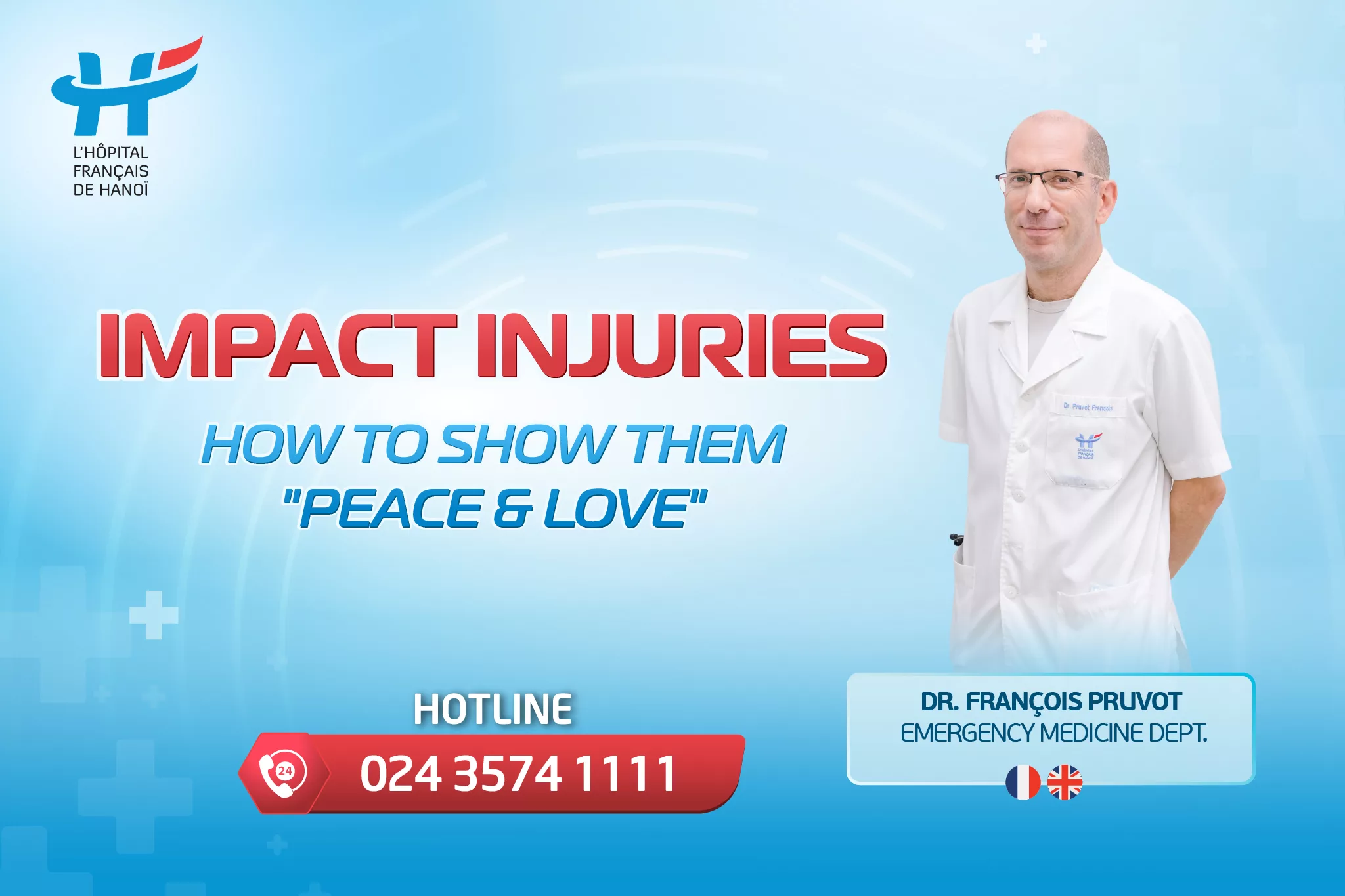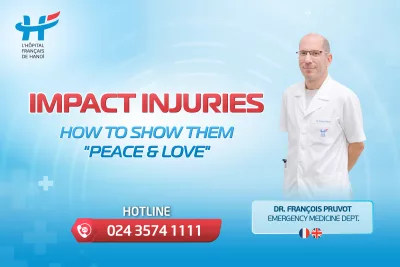Recently, an easy way to remember how to manage soft tissue injuries has emerged in the medical industry, and Hanoi French Hospital’s specialists are here to lift the veil and guide us through it. Initially focused on treating high-level athletic injuries – it is now employed to help patients recover from various musculoskeletal injuries.
Centring the healthcare experience around the patient is Hanoi French Hospital’s guiding principle, and this approach utilises a personalised treatment plan across multiple departments. It informs and brings the patient into the discussion, offering a deeper understanding of the injury. If someone suffers an injury such as a sprain, strain, muscle pull or ligament tear, it can lead to lasting damage and great pain if not treated correctly. This new system simplifies the process for the patient to maximise their chances from the moment of injury to their final recovery milestones.
You may have heard previously of acronyms such as R.I.C.E. (Rest, Ice, Compression, Elevation), but until now they have not really been able to address “sub-acute care” – what to do after some time has passed since the moment of injury.
That’s where LOVE & PEACE can light the way.
Immediately after a soft tissue injury occurs we can follow these simple steps that guide our actions as we wait for, and then receive, professional treatment. This covers the initial minutes, hours and days after an injury. We must remain calm and embrace PEACE:
P – Protection. Restrict movement of the injured area. Do not fully rest, however, to encourage your body to initiate regeneration and recovery. Prolonged inactivity compromises the process.
E – Elevation. Where possible, keep the injured area higher than your heart. It helps interstitial fluid move away from the injured area.
A – Avoid Anti-Inflammatories. Interrupting the healing process (even with ice) can cause damage and stop tissue regeneration. Stick to what a medical professional prescribes only.
C – Compression. This helps reduce haemorrhage but you should still allow joint movement if possible.
E –Education. Learn about your injury. Listen to healthcare professionals and ask questions. Set realistic recovery goals and pain expectations. The more you know, the better position you are in to react and remain calm.
Once your treatment plan has been set in place by a specialist or multi-discipline team (this could involve physiotherapists, othopedic surgeons, traumatologists and other departments), it’s now time to carefully manage your recovery and minimise the chances of re-damaging the area or interrupting your body’s important processes. To do this we have to show ourselves some LOVE:
L – Load. Your tissues need to push against resistance to re-activate, but finding the correct amount will take time, and potentially help from trained professionals.
O – Optimism. Mind over matter. Your brain plays a significant role in recovery. Overcome fear, depression and pain with the help of loved ones and believe in yourself and your visualised outcomes.
V – Vascularisation. Blood flow is vitally important to recovery. Light cardio involving different areas of the body will encourage this, and boost your mental motivation too.
E – Exercise. As our body recovers you will restore mobility, strength and agility. You can use resistance and pain as a guide to what you are capable of. Mark milestones and watch your progress lift your positivity as each is passed.
So, there you have it; Peace and Love will guide the way. At Hanoi French Hospital we believe in taking a multi-discipline approach to each patient. We guide you in your recovery using expertise from multiple departments, leading to a patient-centred, bespoke treatment plan for every one of our patients – from presenting at A&E, through surgical specialities, to Physiotherapy and finally towards recovery at home, HFH will be there every step of the way.
You can contact HFH’s medical specialists here:
Hanoi French Hospital (HFH)
Address: No. 1 Phuong Mai, Kim Lien ward, Hanoi
Hotline for consultation: 024 3577 1100


